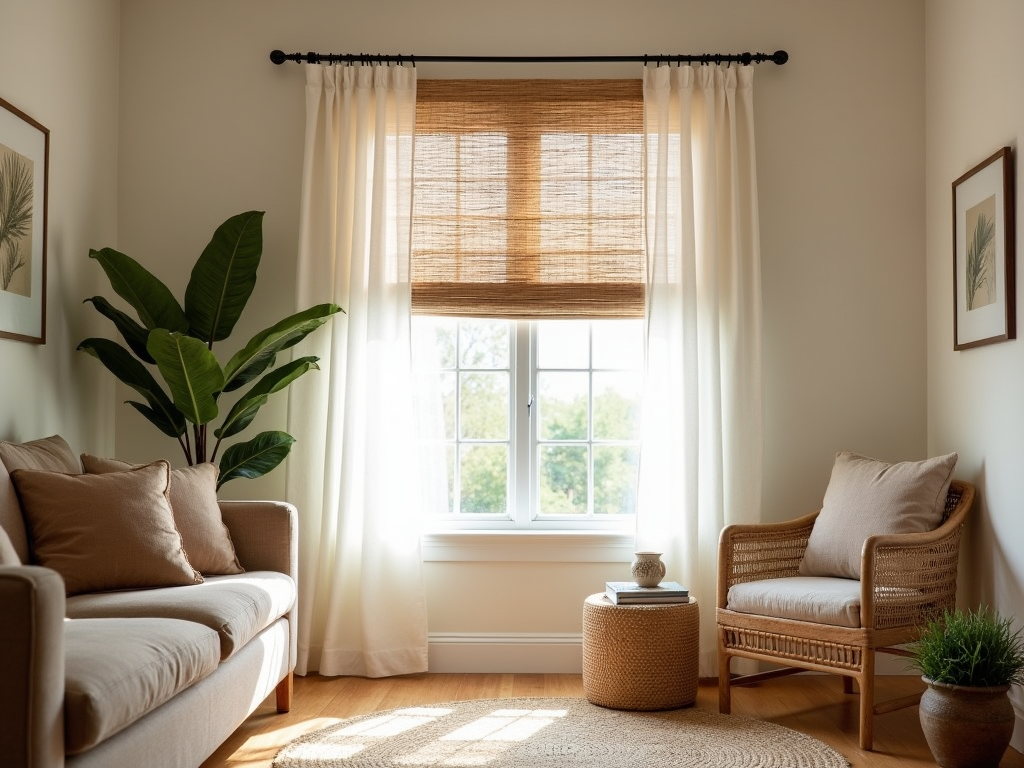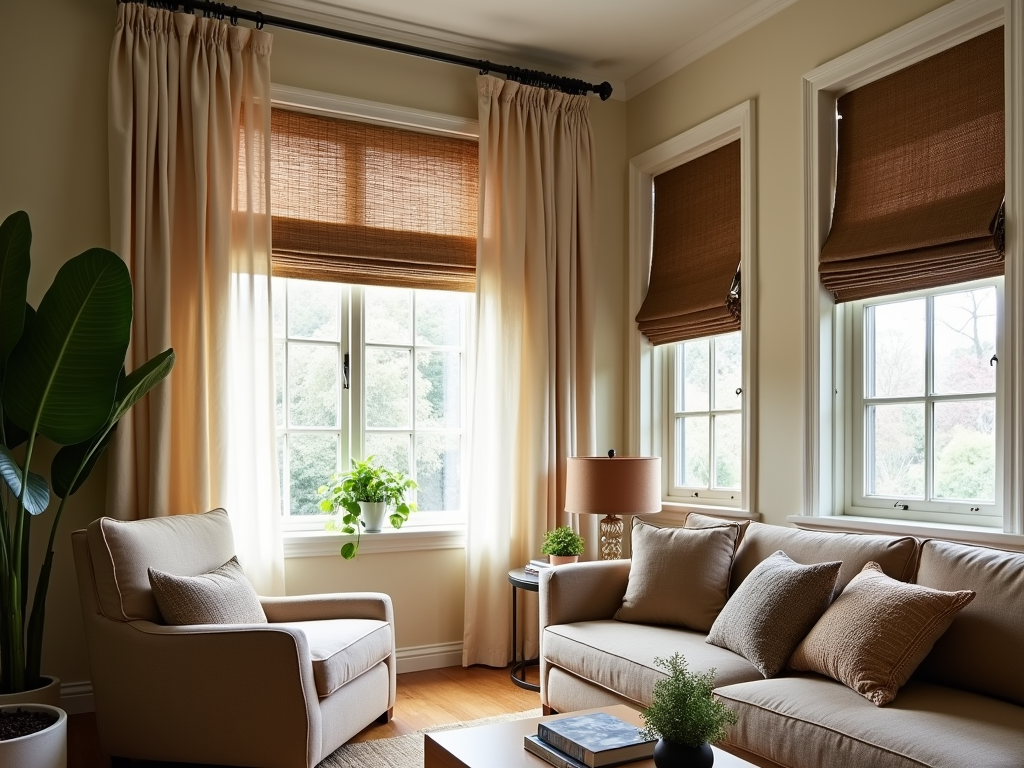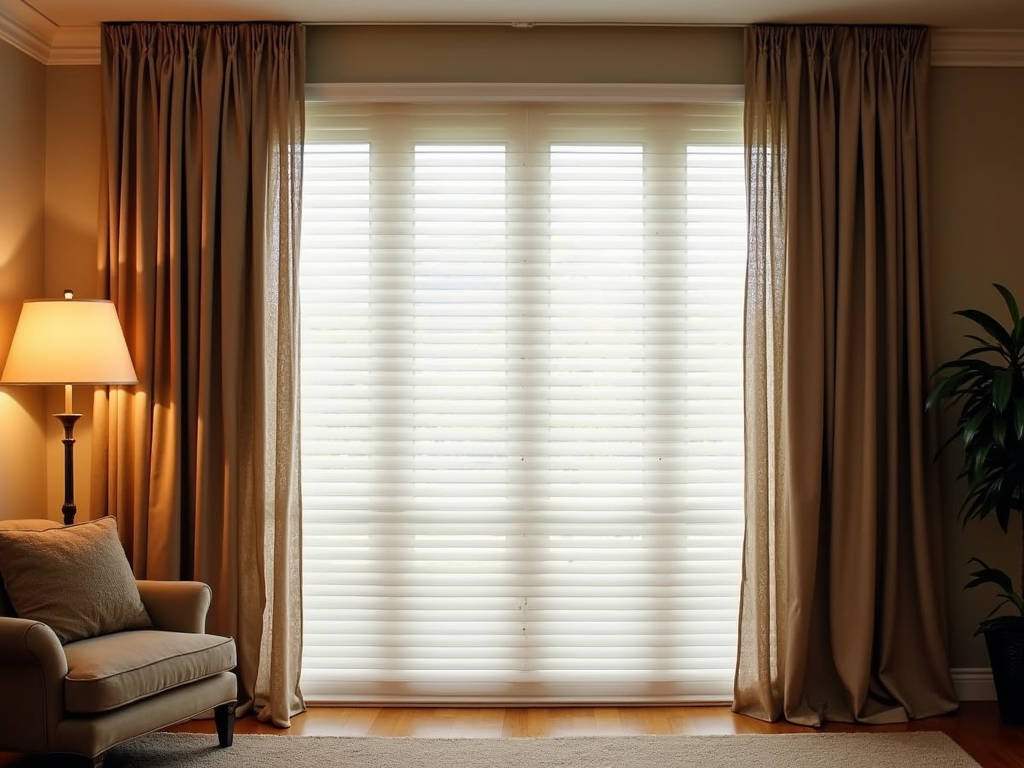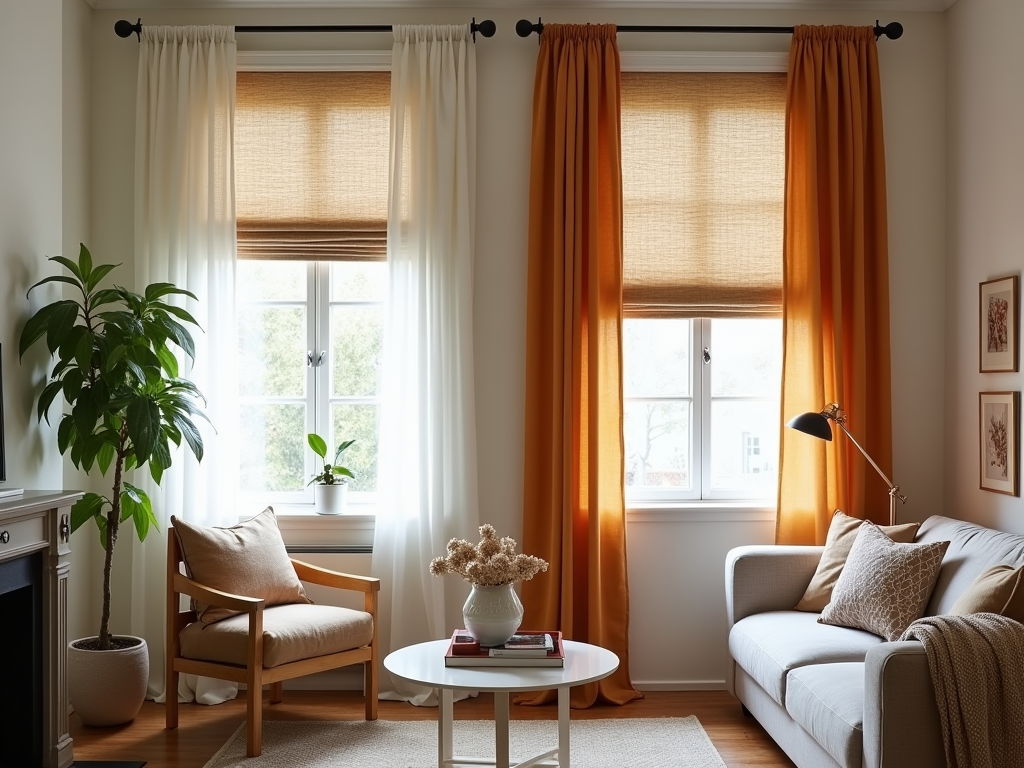
Decorating windows by combining blinds and drapes delivers both style and functionality. This layering approach balances clean light control with soft, insulating accents, letting homeowners create a refined appearance that aligns with their preferences and practical needs.
Key Takeaways
- Combining blinds with drapes boosts both functionality and design, creating a flexible and polished solution for windows.
- Blinds offer precise control over light and privacy, acting as a strong foundational layer, while drapes bring depth, warmth, and extra insulation.
- This pairing opens opportunities for mixing textures, patterns, and colors to complement any decor, whether casual or formal.
- Layering also improves energy efficiency, helping to cut heating and cooling costs.
- Affordable combinations like off-the-shelf blinds paired with DIY or semi-custom drapes make it easy to achieve flair without overspending.
The Art of Layering: Why Blinds and Drapes Work Better Together
Layering window treatments instantly transforms a space and brings a sense of dimension that single options often lack. By combining blinds with drapes, I can create an effortlessly polished look while adding functionality. This approach isn’t just about appearances—it’s about versatility too. Blinds handle the job of light control beautifully, while drapes soften the edges and offer extra privacy.
For example, pairing sheer drapes with natural bamboo blinds gives rooms a relaxed, airy feel. It’s perfect for those cozy corners where you want filtered sunlight during the day but privacy at night. On the flip side, roman shades paired with heavy, textured curtains make a striking statement in more formal spaces. Think living rooms or bedrooms where warmth and elegance matter just as much as practicality.
Layering also lets me adapt to different times of day or seasons. Pull back the drapes to let in the morning light, then close them in the evening for an intimate vibe. It’s even more satisfying knowing I can mix-and-match with different styles, textures, and colors to suit my taste. Those seeking guidance can always explore more about window shades and blinds, which offer endless options for your foundation layer.
In short, this combination blends aesthetics with clever, functional design.

Enhanced Functionality with Two Window Treatments
Combining blinds and drapes balances practicality with style in a way single treatments just can’t match. Blinds give you precise control over light and privacy. I’ve found they’re great for adjusting natural light during the day while maintaining a level of seclusion. Drapes, on the other hand, are perfect for insulation and darkening your room when you need to create a cozier or more restful atmosphere.
When you layer these two, it transforms the experience—it’s like having the best of both worlds. Adjust the blinds during the day for a soft glow, then draw the drapes at night to block out light and keep the room warmer or cooler depending on the season. According to the Department of Energy, layered window treatments can boost insulation and help cut down on energy costs, which is a benefit I think everyone can appreciate.
If you’re also looking to match design with function, drapes offer endless fabric and color choices while blinds add structure and clean lines. Pairing these elements together enhances the look and feel of a space while addressing practical needs like privacy and thermal efficiency.
If you’re not sure where to start, I’d recommend looking into options that align with your priorities. And if you’re curious about whether a single treatment might be enough, I’ve explored that in detail for you in this article about blinds or curtains.

Fabric, Texture, and Color: Building Your Perfect Look
Layering textures can give your windows a unique personality. Linen drapes combined with bamboo blinds instantly deliver a light, breezy vibe that works beautifully for casual or coastal designs. On the other hand, velvet drapes paired with cellular shades offer a plush, dramatic touch, perfect for a formal or luxurious style.
Fabric options like silk, linen, and velvet each bring their own charm. Mixing these with natural textures such as wood or bamboo adds depth. Pay close attention to color coordination. Match neutral blinds with vibrant drapes, or use complementary patterns for a harmonious look without risking visual chaos.
When mixing patterns, stick to a simple rule:
- Combine one busy pattern with a subtle one.
Pairing helps strike a balance. If you’re pondering whether blinds or curtains fit your design better, check out this easy guide on curtains versus blinds.
Trendy Designs to Consider for Layering
Layering blinds and drapes has never been more versatile, with styles that suit almost any décor theme. For a modern minimalist vibe, I’d opt for neutral-colored blinds paired with sheer or light linen drapes. This creates a clean, airy look that feels contemporary without being cold. Neutral layers also let natural light diffuse beautifully while still offering privacy.
If bold is more your speed, bohemian layering is a fantastic choice. Vibrant printed drapes combined with textured blinds, like bamboo or woven wood, bring warmth and personality. These combinations work especially well in relaxed spaces like living rooms or bedrooms, where you want creativity to shine.
Of course, nothing beats a classic setup for timeless elegance. I love using sleek, tailored blinds under rich, luxurious drapery in fabrics like velvet or silk. This pairing blends sophistication and practicality, making it a stunning addition in formal spaces such as dining rooms or offices. To keep things cohesive, matching colors or complementary palettes between the blinds and drapes ensure a seamless finish.
Interior design mood boards often showcase how these layering techniques fit distinct styles. Whether you’re exploring a clean modern look or crave those vibrant boho vibes, it’s all about matching textures and patterns with the surrounding décor. For more insight into customizing your choice, these detailed layouts on window shades and blinds can help refine ideas that work for your home’s personality.

Balancing Style and Budget
Layering blinds with drapes can deliver a stunning look, but it doesn’t have to cost a fortune. I like to mix affordable store-bought blinds with custom-made drapes to find the sweet spot between budget-friendly choices and high-impact visuals. Such combinations give you a polished appearance without spending too much on fully custom solutions.
For even more savings, DIY options are incredibly effective. A simple fabric upgrade or unique tiebacks can transform inexpensive curtains into something much more refined. If you’ve got standard blinds already in place, adding sheer panels or lightweight drapes can easily add depth and style. It’s amazing how a thoughtful addition can make your windows look designer without the designer price.
Beyond the aesthetics, layered window treatments often offer practical benefits. Choosing insulating fabrics or blackout-lined drapes can help lower heating and cooling costs. Over time, energy savings alone can offset some of the upfront expenses. Plus, stylish windows elevate your home’s value should you decide to sell.
Blending affordability with custom elements requires a little creativity but is always worth the effort. If you’re curious about the difference between blinds, shades, and shutters, take a look at this comparison of window treatment options. It’ll give you even more ideas to adjust your budget while keeping your home’s look fresh.
Recommended Blinds and Drapes to Start Layering
Layering blinds with drapes lets you mix functionality with personality. I love starting with cellular shades—they work wonders for energy efficiency, trapping heat or cool air with their honeycomb design. They’re a smart choice if insulation is your top priority, thanks to their higher R-values compared to other options. Roller shades, on the other hand, are perfect for anyone who prefers clean lines and no-frills simplicity. They disappear into the window frame when pulled up, creating a minimalist vibe.
If adding texture is on your mind, bamboo shades are a go-to. They’re earthy and warm, giving a natural dimension to your windows. Bamboo pairs easily with sheer drapes, which soften light while keeping the look breezy. Sheer linen drapes add a refined, airy aesthetic, though they won’t block much sunlight on their own. For a more luxurious feel, velvet drapes are my top pick—plush and dramatic, they also provide excellent light control and insulation when layered with blinds.
Here’s a quick breakdown to keep things clear:
- Cellular shades: Energy-saving, great insulation, modern appearance.
- Roller shades: Sleek, minimal, easy to operate.
- Bamboo shades: Textural charm, eco-friendly choice.
- Sheer drapes: Soft, lightweight, brightens the space.
- Linen drapes: Casual yet elegant, versatile.
- Velvet drapes: Opulent, light-blocking, perfect for colder months.
If you’re unsure where to begin, start small. The key is balancing aesthetics with practicality. Learn more about combining window coverings by reading how others choose blinds or curtains for their windows.
Sources:
Department of Energy
HGTV
Elle Decor
Better Homes and Gardens
